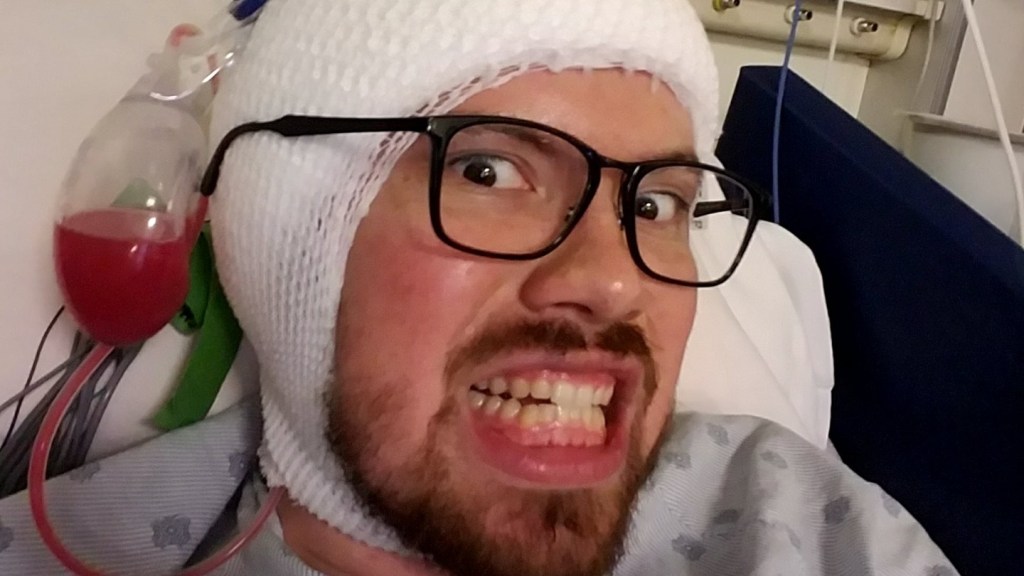In the early 1950s, in a lab at Tulane University in Louisiana, some very strange experiments pushed the outer limits of our neurophysiological knowledge. Dr. Robert G. Heath found that he could manipulate the pleasure and pain centers of the brain by surgically placing electrodes deep inside.
“By implanting electrodes and taking recordings from these deep-lying areas,” he explains, “we were able to localize the brain’s pleasure and pain systems. We’d interview a patient about pleasant subjects and see the pleasure system firing. If we had a patient who flew into a rage attack, as many psychotics did, we’d find the ‘punishment’ system firing.
Videos by VICE
Violent psychotics could be immediately calmed by sending current into their brain’s pleasure centers. This method was only a temporary fix, so Heath came up with a more permanent solution.
Heath had to devise safer electrodes that could be left in the brain for years so that a patient could be restimulated at intervals. Then, in 1976, the “most violent patient in the state” — a mildly retarded young man who had to be tied to his bed because of his savage outbursts — received Dr. Heath’s first brain pacemaker.
Every 10 minutes the battery powered pacemaker would stimulate the cerebellum, essentially curing even the most hopeless of patients. The mildly retarded man was cured of his violent outbursts, a young librarian no longer experienced seizures, and a former physicist no longer heard voices commanding him to strangle his wife to death. Patients would sometimes relapse, but each time it was revealed that the pacemaker had malfunctioned, and they would return to normal after it was repaired.
Some of his more controversial stimulation experiments included giving a woman 30 minutes worth of orgasms, and providing a homosexual man with a prostitute to see if he could change his sexual orientation. He then began experimenting with pain centers, and there is a particularly striking description of one man’s reaction:
His face twists suddenly into a terrible grimace. One eye turns out and his features contort as though in the spasm of a horrible science-fiction metamorphosis. “It’s knocking me out … I just want to claw…, ” he says, gasping like a tortured beast. “I’ll kill you…I’ll kill you, Dr. Lawrence.”
Today this type of treatment is called deep brain stimulation, and it has been FDA approved for Parkinson’s disease, dystonia, and essential tremor. The surgery installs a brain pacemaker that is significantly smaller, and more sophisticated, than Dr. Heath’s 1950s version. Complications that can occur include hallucinations, cognitive dysfunction, compulsive gambling, and hypersexuality. Unlike drugs, it is not possible to develop a tolerance for this type of treatment.
In 1985, transcranial magnetic stimulation (TMS) was developed by Anthony Barker in
Sheffield, England. By using a magnet to depolarize neurons, this method requires no invasive surgically to stimulate the brain. It has been approved by the FDA for treatment of Major Depressive Disorder in adult patients, but only if prescription medication has failed.
Heath’s work has surprisingly gone largely unnoticed, but some interesting details have come to light. There is speculation that he was involved in the CIA’s illegal human research MK-ULTRA program, having received funding from the US government for his experiments. This isn’t surprising, as these experiments are perfect for those interested in mind control.
Further reading:
A Pacemaker For Your Brain
Neural implants: 3 guidelines
Scientists Find Moral Compass, Then Scramble It With Magnets
Follow us on Facebook, Twitter and RSS.
via David Pearce’s Paradise Engineering and Wireheading



